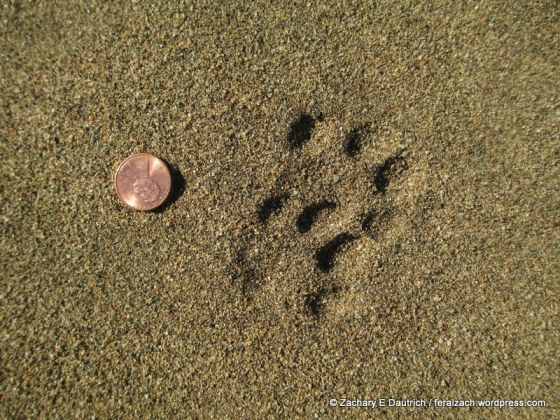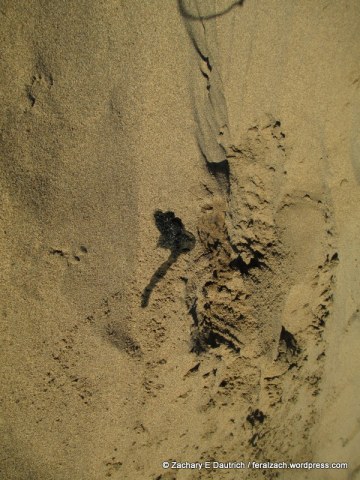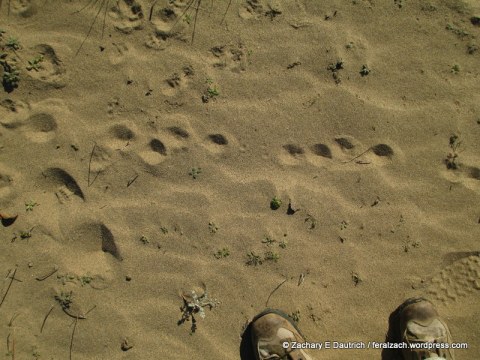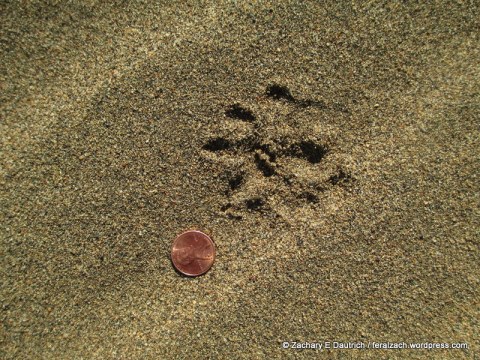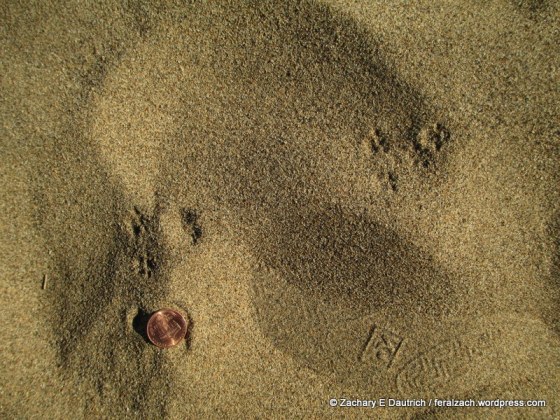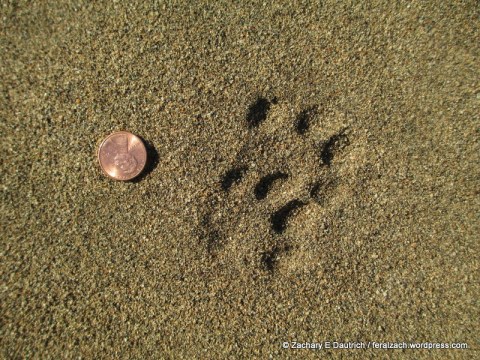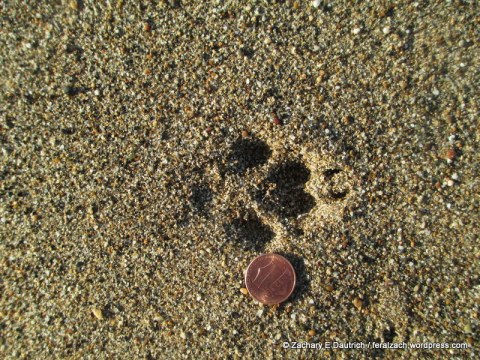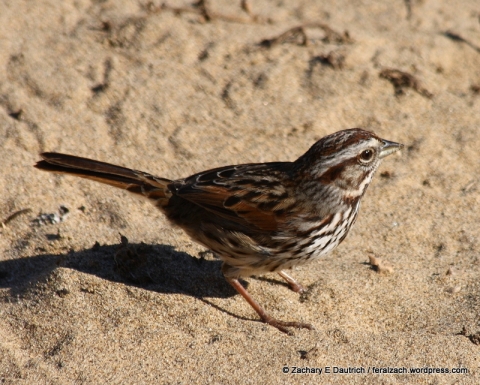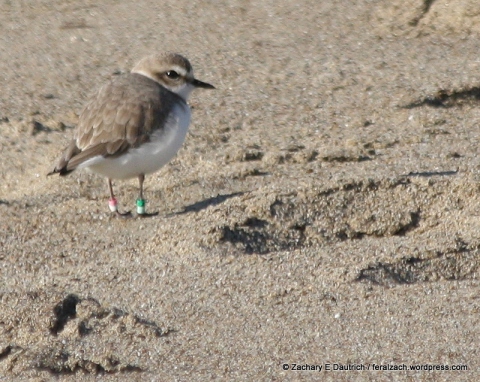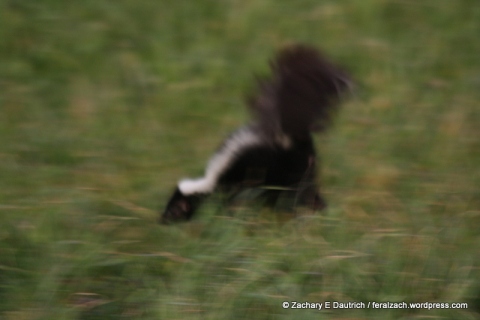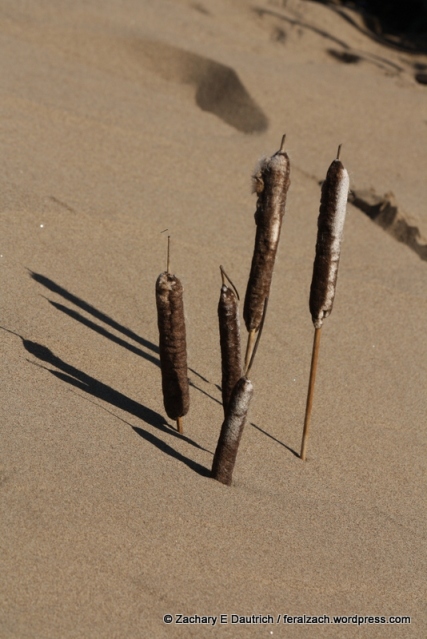canine track id study

the other week during a wander with my friend and mentor Jim Sullivan (see his website and tracking class offerings here) – an amazing tracker, naturalist, and all-around brilliant fella – and other great trackers like Ginger; we had a suburb opportunity to see some canine species’ track diversity laid out before us. it’s not often you get to see four canine species’ tracks together in decent substrate. identifying the differences between them can often be very challenging, so any chance to see any of their trails, also in varying substrates, is incredibly illuminating. to get to see all of them in one day avails an incredible study opportunity.
coyote vs red fox vs gray fox vs domestic dog – it is a study that is always ongoing for me, especially with partial tracks and trails. these species don’t always overlap geographically, and even if they do, often their seasonal movement patterns don’t overlap in such a way that you can see their tracks together, especially in one day. sometimes it is very obvious the difference, but sometimes it can be confusing given the right circumstances.
 gray fox track / Bodega Bay area Sonoma County CA
gray fox track / Bodega Bay area Sonoma County CA
 small red fox track (likely non-native species, on left) and western coyote track (right)
small red fox track (likely non-native species, on left) and western coyote track (right)
 red fox (R) and western coyote track (L) / track plates copyright Mark Elbrock’s book
red fox (R) and western coyote track (L) / track plates copyright Mark Elbrock’s book
the red fox tracks we found were on the small end of the spectrum – there was some debate about id due to the size. it was at the small end of the red fox size spectrum (and at the large end of the spectrum for gray fox), especially upon initial (eye-ball) inspection. but further analysis (and healthy, civil debate among accomplished trackers) left us concluding red fox. context, the full trail, and multiple tracks often help in track id. actually it’s often about context. having the chance to see full trails, and the way the tracks vary within each substrate, really help in honing the ability to discern one species from the other in the future when there is only a partial track or trail.
 a snippet from my journal analysis of red fox vs coyote 2015
a snippet from my journal analysis of red fox vs coyote 2015
drawing and journaling is a great way to solidify the memory of ideas and patterns in the ol’ brain.
great day
Klamath Basin report IV- the coyote and the eagle

Once again, sometimes you’re just in the right place at the right time. Two days in a row seems pretty good, eh? Though for all I know while I took pictures of this coyote and golden eagle together, there was a mountain lion dancing with a wolf just down the road.
I had been watching a golden eagle that was perched on a low sign along the snow-covered road in Lower Klamath National Wildlife Refuge for some time. There is something special about a close encounter with a golden eagle, and my breath leaves me every time I have an experience such as this. They are HUGE animals. Golden eagles can take down small deer! In other parts of the world where the eagles are slightly bigger and the wolves are slightly smaller, they kill wolves. This is an animal that is at the top of the food chain. An apex predator.
A beautiful one as well.

golden eagle adult / Lower Klamath NWR

golden eagle adult / Lower Klamath NWR
After observing the eagle for some time, it sliced (pooped) and took off to start hunting in the treeless wetlands around the wildlife refuge. Those wings!!!! Incredible to see an animal this size take flight.

golden eagle takes flight / Lower Klamath NWR


After it took off, a quick movement caught my eye on the other side of the reeds along the snowy dirt road on which I was positioned. The roads are raised on levies to allow navigation through the wetlands. Most of the water is frozen though, and what I saw was a coyote moving away from me parallel to the road. Once my eyes locked onto it, it sensed it and increased its speed, changing from a trot to a full-on bounding gait as if I were in pursuit! I am willing to bet there are hunters out there that take shots at them.
Eventually it stopped running, being sure to look back at me as if to say “I see you and don’t think for a second I am not watching you, two-legged.” It started to move at a fast trot along and through the reeds on both sides of the road, often crossing it. It appeared to be hunting, possibly trying to flush prey or looking to scavenge a meal. Or, it was following another coyote trail and marking its territory. There are coyote trails all over the place out there. The prolific amount of prey there in the Klamath Basin attracts more than flying predators.

larger tracks in background are coyote, small tracks in foreground are from a bounding mouse (or mice)
Eventually the coyote disappeared, so I started driving down the snow-covered road again. In just a hundred yards or so, I stopped because I saw the golden eagle again, hunting about 20 feet off the ground over the wetlands, almost like a Northern harrier. I slowed to a stop to watch the hunt, and not long after, the eagle landed on another short road sign just ahead of me.
Suddenly, I caught sight of the coyote again, briefly, and then it disappeared into the reeds on the other side of the eagle – then re-appeared right next to the eagle!! I couldn’t believe it. The eagle did not seem the least bit surprised to see the coyote, even as it passed directly by it not five feet away. Nor did the coyote seemed surprised or concerned – despite them being well within striking distance of each other!!!!! The coyote paused near the eagle, and the eagle sliced (almost on top of the coyote), then the canine came out into the roadway, shot me a glance, smelled a fresh coyote scat (confirmed once I drove up there after the encounter), then disappeared back into the tule reeds by the eagle.
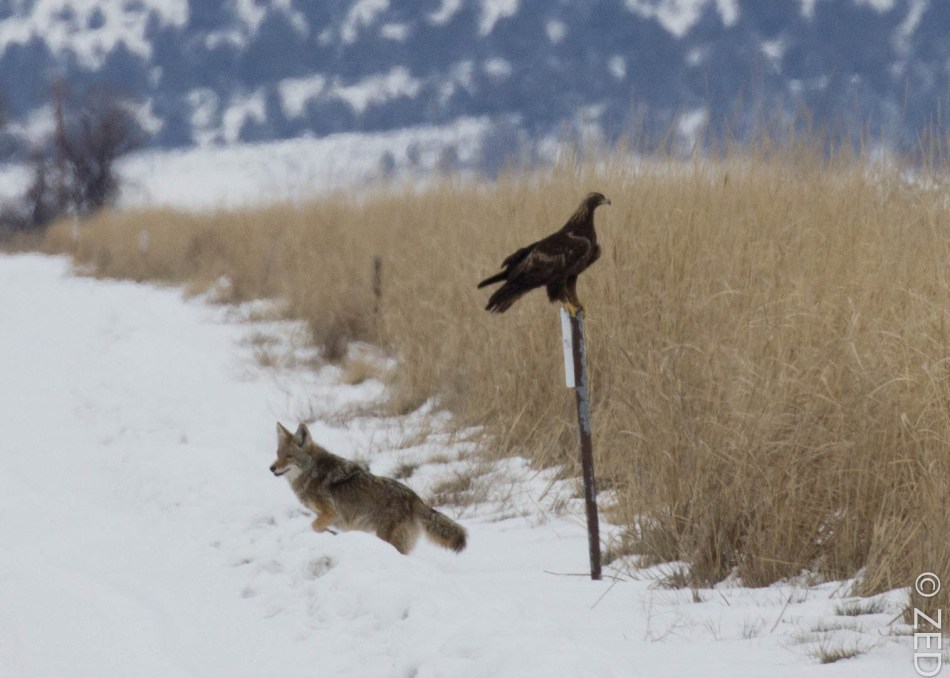
coyote and golden eagle / Lower Klamath NWR
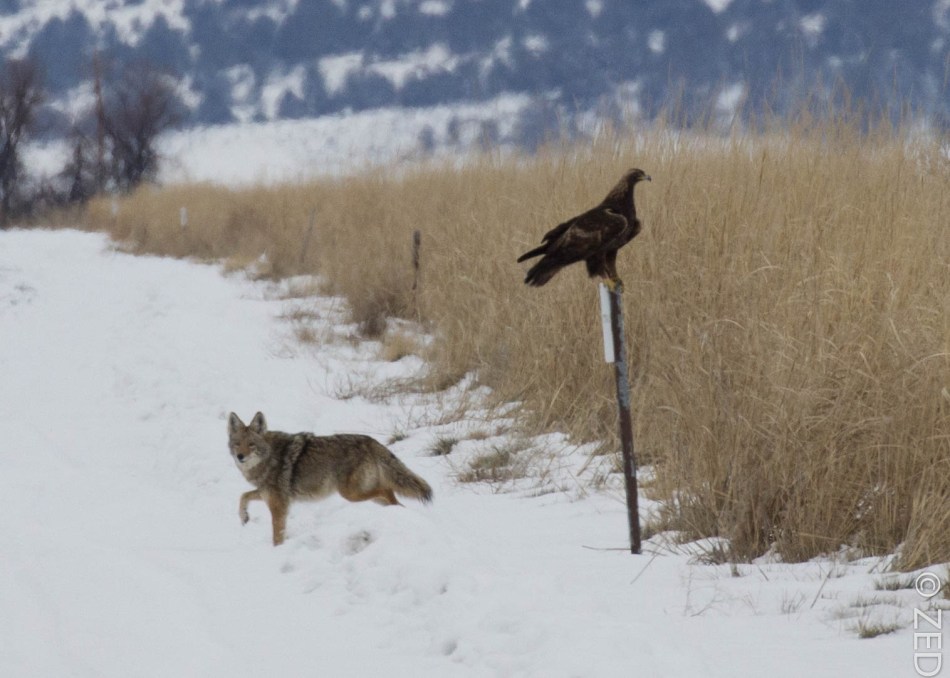
coyote and golden eagle / Lower Klamath NWR

coyote and golden eagle / Lower Klamath NWR

coyote and golden eagle / Lower Klamath NWR

As I approached in my vehicle, I passed the eagle and we had a moment of looking directly at each other. It is an experience that is intense and humbling. After I passed, the eagle took off, and I was able to
take a look at the scat and tracks. The coyote continued to hunt along
both sides of the road for a few hundred yards until finally it
continued south over a large berm.
Great encounter!
20150913 salmon creek wander

Beautiful day out by Salmon Creek in Sonoma County – a bit of sun before the marine layer rolled in thick like a fluffy down comforter over the beaches and dunes. Lots of red and gray fox track and sign, even more striped skunk track and sign. Almost no new rabbit sign. I’m beginning to think that perhaps the area is like an animal beach-condo timeshare – evidently the skunks have it this time of year and the rabbits are vacationing elsewhere.
This red-tailed hawk has some really interesting plumage, it reminds me of a bird I saw once in the high desert in Washington. You can see there is tan mixed in with the brown and white on the back, and its head and especially neck feathers are really light. Beautiful bird, very striking.
This osprey and I were able to see eye-to-eye today on composing this photo. Much appreciated! Their eyes are HUGE compared to the rest of their head.
We watched a coyote hunting from across the creek for quite some time, it seemed to be stalking through the high grass, occasionally stopping to dig or pounce. Sometimes it would get really excited and stand with its ears facing the ground, while its tail whirled around like a helicopter blade behind it! It made a short trip to the waters edge, but all the water fowl were already tuned-in to its presence. A doe and two fawns watched it with interest from within 50 feet – the coyote didn’t even give them a look. Rodents and insects seemed to be on the menu today. So fun to watch this guy hunt!
The pounce!
We had quite a few nice red fox trails to study today, this is a good example of a classic red fox track (front foot on the bottom). The diagnostic “bar” in the metacarpal pad of the front foot is very evident in this track – it’s not always clear, but if it is it can be one helpful sign (of many) to differentiate red fox tracks from coyote tracks.
I didn’t get a picture, but we observed what we believed to be two or three pomarine jaegers (a type of flying sea bird) offshore attacking some elegant terns out at an area where many birds were feeding. It was my first sighting of this species, and evidently it’s uncommon to see them from shore (usually they are seen from boats further out to sea). There were quite a few dead murres along the beach, these are also ocean-going birds, but curiously they come onshore almost exclusively to die. Often people see these birds on the beach and try to save them, not realizing that they are already doomed. Many a kind-hearted person has been confused and heart-broken trying to help these birds. I photographed one last year down towards Moss Landing near Monterey. They look a bit like penguins when they are sitting or moving out of the water.
Down on the beach there was a large flock of marbled godwits feeding in the surf line, using their long beaks to probe in the sand for crustaceans – occasionally they would flush and fly down the beach all together.
Great day out on the coast, very thankful to live close by to such natural beauty.
20150906 observations of the season

One of my favorite times of year – things are shifting! The patterns are changing all over, some more subtle than others. I’m hearing and seeing new birds as they pass through on their way south, and the resident birds and animals are starting to shift their patterns as well. Fox squirrels seem to be everywhere I turn, busy running and gathering. The mornings are sunny and there’s a slight crispness in the air starting to build, almost a bit electric. The light has a softness to it, despite the heat that today was above 90 deg F in the immediate Bay Area. Not easy weather, to, um, weather, for a landscape already parched with drought. Even the winds have gone elsewhere, allowing a degree of peace to settle over the stressed landscape. Sitting still I can hear bugs crawling through the leaves, and the occasional falling leaf even makes a sound as it falls through the dry undergrowth to join its crunchy fallen partners on the ground, who are now having the chance to use their voice – while not drowned out by Wind – to announce Coyote or Deer moving nearby. So fun!
 fox squirrel chowing on juniper berries
fox squirrel chowing on juniper berries
Things are incredibly dry here – you can read about it all over in the news, worst drought in over a century and possibly since settlers have been keeping records here. But, to really understand it all one needs to do is to go out to FEEL it and see it yourself. Springs and creeks are dry. The evergreen trees, such as the live oaks, are even losing some of their leaves (which I understand is a drought response tactic to minimize moisture loss). Many of the under story leaves and any leaves not at the top of the tree or on the exteriors have fallen away, to varying degrees, depending on the location of the trees. I’m able to see wood rat nests high up in canopies that were very difficult to see before. Even the California buckeyes, who are some of the first obvious beacons of autumn since they lose their leaves before most other deciduous trees, have been bare for weeks in some locations. Redwoods and cedars are looking wilted and brown. Even the non-native eucalytpus trees look scraggly. A fine dust encapsulates many of the leaves, and the hillsides are painted brown with wilted grasses.
I’m happy to report that I’m doing my best to help conserve water – infrequent showers, I don’t clean my bathroom, and I occasionally drink distilled beverages instead of water (the distillation process releases water back into the atmosphere – that’s science). Little gestures, they add up.
One benefit of the trees being thinned out (if one wants to be a “glass half-full type of person” – though a water analogy is probably not appropriate here), is that there aren’t many places for a large bird to hide. Until about two weeks ago, I was seeing with some regularity a family of Cooper’s hawks hanging in one particular area. I thought it was interesting that they were all still together this late in the season – the migration has begun for many birds already. The first day that I saw them, about three weeks ago, two juveniles suddenly appeared indiscreetly in the branches 20 feet above my head, crashing around either chasing each other or chasing potential prey (a bird). They finally settled into the interior live oaks next to me, and soon were joined by an adult. A few days later, I saw the same trio in a nearby tree near sunset. I don’t know much about these hawks’ chick-rearing patterns, but I couldn’t help but wonder if these hawks stay around parents longer than some other raptor species to learn from them. It could be a late nest, but it seems extremely late if so. Cooper’s hawks (and sharp-shinned hawks, their mini look-alikes) often tandem hunt in pairs, one flushing birds as the other wake hunts and catches them. Could it be that this is a learned behavior?
Of course I must mention the owls.
 great-horned owl
great-horned owl
This gal has been very visible the last few nights in her “typical” spot, though it’s been a number of months since I’ve seen her with regularity. The male and the female do not seem to be together much this time of year, and I am convinced the male is roosting in a grove of trees about 1/2 mile away from the spot the females frequents, an area that seems to be their core area during mating season. She let me watch her as she was waking up two nights ago, doing some preening and stretching, then she hit “snooze” for a bit after she placed a hex on someone or something evidently right behind me …
This photo was interesting, I wish I could have gotten both birds in focus – do you see it?
Hummingbird came in to scold the owl! It hung around for a minute or so, just behind the owl.
The next night, I wandered without my camera but was excited to get to spend some time with the female owl again. After she flew off to look for breakfast, I followed her out a path under the fading light of the sun that had already disappeared behind the mountains to the west. As I was about to crest a hill and descend into a small valley, another raptor caught my eye – juvenile cooper’s hawk! Likely one of the juveniles from the trio described earlier, though I didn’t see any of the others. This young one did some flights through some small oaks attempting to scare up some birds from their night perch, then having failed to get any takers, it landed on an old wood fence post and began to vocalize repeatedly – in what felt to me like frustration and irritation. It’s not easy being a young raptor (many species up to 70% don’t survive their first year). The young one made another attempt, alighted on a high tree nearby, then took off after three flying birds (who were not keen on the company).
As it finally flew off, I heard some coyotes howling just beneath me! I silently walked in that direction – then … crunching! Coming my way! I froze, and sure enough one, then another, then another appeared in the fading light. They didn’t seem to see me (or maybe they just didn’t care), once they all were in line together they trotted with purpose to the south to start their nightly excursions.
Last sounds I heard were the crickets calling as I walked through the “portal,” and the sound of cars from the highway took over the soothing sounds of nature. I’m so grateful for the parks that we have here in the Bay Area, like many of the creatures around, I wouldn’t survive here without them.
20150711 coyotes n crows
the eyes on the top coyote in the above picture have such a wild intensity in the setting light of the sun, below is an extremely digitally zoomed-in close-up of that coyote. beautiful, wild, and a little bit eerie! i did nothing to enhance its eyes.
possibly the same pair the previous night:
20150630 venus and jupiter conjuction
closest appearance
for venus and jupiter this time around the sun
tonight at under 1/2 degree separation from our vantage on earth
the sun set leaving an orange, then pink-tinted sky, with the nearly full moon low in the east
the wind was still and the heat from the day was still rising from the grass-covered hills
the coyotes howled across the valleys as twilight melted away the last light
and the owls at the top of the hill made an appearance together, hooting back and forth
between themselves and sometimes the featherless hooter below
the crickets in the background sang loudly, now that the winds had nothing to say
and as the sky darkened, the lights of the sky and the city glowed
above and below Mount Tamalpais
as the fog crept from the sea into the valleys below it all
20150629 venus and jupiter conjuction one day away
venus and jupiter are now one day away from appearing less than 1 degree apart in the sky looking to the west just after sunset (occurs on tuesday june 30th) – and wednesday is a full moon. tonight just to the right of the moon, just above scorpio (to the south after dusk) is saturn as well. the bright star antares (17th brightest in the sky), part of the scorpio constellation, glows red compared to the other stars – which helps locate the constellation (almost due south after sunset). tomorrow night (june 30) saturn will remain above scorpio but well right of the moon.
the owls were moving around early tonight and very active, and their eyes seem to shine with vigor in the dim evening light. a coyote popped it’s head up on the other side of a young bull this evening, thinking it was unseen, sending the young bull in a run right towards and past me (which was a little intense). a few moments later the coyote’s head popped up again to look at me, as if it was checking in to see how its joke worked out.
good one coyote.
2015 mar 31 – levitating coyote
this coyote was either jumped out of a resting spot by the lakes or it was hunting along the banks. we saw several flushes of water fowl on the lake while we were there, one of which put 1000’s of white-fronted geese off the water and into the skies in numbers that were impressive to behold. that flush was likely not the coyote, but an aerial predator like a bald eagle or a peregrine falcon. the coyote flushed a smaller number of birds close to shore, then, once the coyote came close to us, it started to lope at a fast pace – occasionally looking back at us as if to say “I’m not scared of you, this is my place.” they can move with such grace and speed, effortlessly its seems.
after it crossed the pond in front of us onto our side of the shoreline, it stopped to mark (urinate) while staring at us – then bounded into some high grass. quite a treat to see, and this one had some real attitude.
time of the new owls (and the meaning of life)
Almost everywhere I go wandering now, right around sunset, I start to hear their calls. It is an unmistakable sound – a loud, short, ascending, piercing/shrieking “what the hell is that?” call that cuts through the falling night and thick air – a whining, desperate, yet strong sound – definitely recognizable to even the untrained ear as the sound of a begging youngster. The young great-horned owls are now out of their nests and flying around, but still dependent on their parents for the bulk of their food. And they don’t let them forget it.
Sunday night, I took a wander at sunset to see the last light of day before the arrival of the so-called “super moon.” Most media sources have exaggerated the size of the moon on these occasions – regardless, it is certainly slightly brighter and bigger during these times when the full moon and perigee coincide (perigee is when the moon is closest to the earth during its elliptical orbit around us).
Just after the sun set, as I was sprinting down the mountain side that was my sunset perch, I spotted a coyote already starting its rounds …
I followed it, and we stayed on the same path for at least a mile until a second coyote came into view. The moon was not yet visible from behind the low-hanging clouds to the east, but this valley was already alive with the creatures of the night. As the coyotes darted around in the open field marking their territory and investigating the ground squirrel holes, the baby owls had started their begging calls in the treeline to the south. By ear, it sounded like three of these young ones.
I watched one coyote mark an area up the side of the valley, then disappear over the ridge. It’s mate walked over to the area that had seemed to captivate the male, then disappeared in the other direction. Of course I went to see what they had been checking out.
Just as I reached that area up the hillside opposite the sound of the young owls, the female coyote that had just been there re-appeared back on the trail where I had just been – she had looped around and was now watching me. In this light (or lack thereof), it takes a careful eye to see them even when they’re moving, their camouflage is so amazing. As I looked at the area they had been checking out, she checked out the area that I had just been. Our gazes met briefly as we acknowledged one another and then returned to what was before us. She backtracked where I and the first coyote had come from, until finally cutting up a ravine in the general direction that her mate had gone.
The owls were now making so much noise I had to go over to check it out. There was very little light left in the sky, but as I approached the treeline I was able to make out two juvenile great-horned owls perched up in the oaks. Occasionally they would hop to another branch, or dislodge one another in turn from their perches in what seemed like youthful play, and perhaps inpatient anticipation of their first meal of the “day.”
There were three young ones, and the two adults were there in the general area as well, hooting amid the youngsters’ begging. Five owls making a lot of noise. In addition to the hooting, the adults made some other sounds – ones that they seem to use when greeting each other at the beginning of the night when they reunite from their daytime roosts. It’s an intimate and endearing sound, almost a cooing noise mixed with a cluck.
I watched for about ten minutes until they finally dispersed into the night – likely the young ones followed the adults as they set out to hunt, making their job of getting food that much more difficult!
It was just about then that the moon rose above the clouds – what a sight indeed. The air was still and warm, and with the sudden light of the moon the entire valley lit up with a blue light that illuminated everything.
True tranquility.
As I wandered slowly back towards my vehicle, a buck and a skunk escorted me out.
+ + +
The next night, I went for a run at one of my favorite spots nearby where I live, just before sunset. As I paused at a spot to stretch and do some pull-ups, I heard those familiar calls. This time it was from a nearby valley. After about five minutes, the calls came closer, and I realized that one of this other set of young great-horned owls was just above me in a coyote bush at the top of a hill. I crept up the opposite side of the hill until I was behind another coyote bush, about 20 feet from this young owl who was now at eye level with me. It peered over to look in my direction just as I looked out from behind the bush …
Then it started begging, right at me! It’s mouth opened so wide, it looked like I could peer directly down into its belly! And the sound! It was incredibly loud, coming right in my direction. I didn’t move. Finally it swiveled its head around to face the valley before us, in the direction of its two siblings, and continued to cry – occasionally looking around and back at me, spreading its cries in every direction in hopes of a meal soon. We spent a few minutes together, and it was only the approach of an oblivious hiker who came within about 100 yards that ushered it to take flight.
I cherish these moments.
more coyotes
The coyotes in Wildcat Canyon live an interesting life … living on the outskirts of a major urban area in a mixed-use regional park. They share the space with people, dogs off-leash, cattle, and nosy trackers like me. I often see dogs chase these ‘yotes, but they always seem to evade with ease. Many times though I see them flowing over the grass covered hills, using little dips and drainages as cover in broad daylight unseen, with unsuspecting people and dogs walking just yards from them. They seem to have a sixth sense for avoiding discovery. And many times they are hunting gophers in these same areas, gingerly walking over the landscape in a slow, focused and methodical way, waiting for the furry prey to disturb the soil and give away their location just inches below the surface. Given the number of individuals I’ve seen/heard in a small area so far, I’d say they are doing pretty well.
The female shown above is exceptionally beautiful, with a vibrant, glowing coat of mixed browns and grays and contrasting black fur along her spine and tail. She seemed really healthy, and she didn’t notice me as I photographed her scouring the hillside for gophers.
It is also the time for many birds to be courting, and the red-tailed hawks were out in numbers today after the brief rain, dancing and soaring through the blue skies along with two pairs of ravens. In an unusual role reversal, I saw one of the red-tails chase a raven – usually it’s the ravens/crows harassing the tails. Once the sun set, one of the multiple pairs of great-horned owls that call this area home were hooting to each other in the mixed Monterey Pine and Eucalyptus forest at the top of the hill. There is no better compliment to the still feeling just after sunset, when twilight has usurped the day and that electrical charge starts to build signaling the changing of shifts, time for the creatures of the night to start their day.
coyotes of wildcat canyon
I’m getting to know the pack a little better, there are quite a few in this regional park just five minutes from my house. Not only that, there is apparently a ferruginous hawk overwintering in one of the more remote valleys, along with many red-tailed hawks and great-horned owls. And I finally saw some fresh bobcat sign – I was starting to wonder if this park needed to be renamed Coyote Canyon.
This drought is brutal – but, looking at the positive side, I was able to wander until well after sunset comfortably with just a t-shirt on. Well, and pants too. The views from on high in that park are spectacular, with single views spanning San Fran, GG Bridge, Mt Tam, San Fran Bay, San Pablo Bay and lots of the East Bay.
I came upon a new pair of coyotes today, and before we all saw each other, one of them started howling about 20 yards from me – at which point the valley I was in erupted with at least half a dozen answering howls, as well as some in adjacent valleys nearby. The pair was very surprised by my presence when we finally bumped into each other – it’s a relatively remote spot in the park.
Hopefully I’ll have some more pictures soon.
another abbott’s adventure … sand stories
i don’t have a lot of words right now. one morning at a place like this is the same as reading 1000 books, combined with touching 1000 textures, smelling 1000 smells, hearing 1000 sounds, tasting 1000 flavors, seeing 1000 treasures and feeling a 1000000 heart strings of life.
we were treated at the beginning of the morning just after sunrise to the five resident Otters foraging in the lagoon, and a visitor that I have never seen before in this immediate area … a golden Eagle!
the above picture was of a creature foreshadowing things to come – this red-legged Frog (?) was a precursor to SO many Frog tracks in the sand, along with many deer Mice and brush Rabbit tracks – appearing in the middle of bare sand dunes for reasons unexplained. I surmise the new moon allowed some expanded forays for these normally reclusive species who stick to the cover of the plants on the edges of the dunes during most times.
brush Rabbit tracks
Frog tracks (likely red-legged Frog)
river Otter scent marking on the dunes
Bobcat (on right) and some type of amphibian (Salamander) tracks on left – perhaps an Ensinitas?
deer Mouse tracks with tail drag
beautiful clear front tracks of a red-legged Frog (right) along with deer Mouse tracks on the left
great-horned Owl tracks leading into a take-off spot
great-horned Owl trail …
WOW! what a find!!!! the trail seen in the picture from the left is a great-horned Owl coming in for a landing (final landing spot seen in the center of the picture). you can see it’s wing and tail feather imprints in the sand. also you can see a Raccoon trail diagonally across the picture from lower right to left (occurring after the Owl), along with faint Frog tracks paralleling the Raccoon, and some two-legged tracks at the top.
another view of the great-horned Owl landing spot (along with feather marks in sand!!), and its trail leading away from the landing point – ultimately to a take-off spot around 10 yards away. again, you can see the Raccoon trail across the center, and many other tracks in the background.
great-horned Owl tracks
a beautiful black-tailed mule Deer trail
Sanderling trail (?) … though I’m open to other interpretations … and some faint deer Mice, Frog and insect trails – this was found in the lagoon sand dunes, far from the surf
more Sanderling (?) tracks
another (!) great-horned Owl trail in the sand dunes!
one of my favorites to see live (but seldom a dependable sight), there were plenty of north american river Otter tracks around
the turkey Vultures are always hanging around for a meal, and this (faint) track (among smaller shore bird tracks) showed that they are quick to come in on the remains of shore birds who are predated at the lagoon by a varied cast of opportunists …
Bobcat tracks in sediment / algae
Bobcat trail in sediment / algae
Bobcat tracks (nice shot of front and rear) – based on the size and the shape, we decided it was likely a male
likely a Bobcat scat – it contained almost purely feathers!
Osprey – one of the NINE raptor species that we were treated to seeing on this day (Osprey, northern Harrier, white-tailed Kite, Kestrel, peregrine Falcon, turkey Vulture, Red-tailed hawk, Ferruginous hawk, and golden Eagle!). My friends also saw a Cooper’s hawk as they were driving out.
Red-tailed hawk on dunes
these snowy Plovers, a highly endangered species, were using human tracks in the sand as wind breaks from the increasing gusts coming in from the ocean – it was pretty adorable
this peregrine Falcon was not welcome company for the Kestrel who was attempting to escort it out of the area
the “mud hen,” or Coot – top of the menu for many predators at this time of year here. when the Otters come by, they move to the shore and band together, waiting for them to pass
for reasons still not understood (by me), the Ravens were harassing the Red-tailed hawks as usual. perhaps it is for fun or to prove social status … fun, being something that the Ravens seem to incorporate into their lives all the time, evidenced by their frolicking in the air lifts caused by the oncoming winds into the dunes. seeing them play in the air is like watching Otters in the water, the energy is simply fun!
lots of black-tailed mule Deer around in the fields, where we also saw lots of Badger sign
Coyote tracks
a cool shot of some black-tailed mule Deer tracks in the sand (with some two different bird tracks on the right of the frame)
the only animal signs that I might have expected to see and didn’t on this day were the grey fox and jack rabbit. grey Fox sign isn’t often seen right in this area, but jack Rabbit is. curious.
what a great day out at Point Reyes National Seashore, this place is such a gift – may it be protected for all this diversity of life to thrive, always.
zd
another otter day …
… in this odder month.
A few coyotes too on this beautiful day on the coast with sunshine and little wind with highs in the 60’s.
This otter, one of the five “regulars” at the lagoon, was chowing on a large bass. A few of them caught some large bass as a small number of wary coots looked on from the edge of the water (they are also on the menu). Usually we just see their sign on the banks, but lately I’ve been getting a show.
I spotted a raft of sea lions heading south in the water at a fast clip – they were taking turns breaching a few hundred yards off shore, often totally coming out of the water. It seemed they were feeding, as opposed to avoiding a large shark (also a possibility, as this area is in the “red triangle” aka great-white shark breeding grounds).
Point Reyes tracking day
Ahh, where to begin. This post has taken me a long time to get up because one day of tracking can yield volumes of stories and tales!
Our day at Abbott’s Lagoon a few weeks ago began with a morning of warm sunshine, after a few days of very cold temperatures and rain – as we started out towards the sand dunes near the beach we saw quite a few black-tailed mule deer in groups of over ten individuals. There was a herd of males of all different ages in an adjacent field, their antlers varying from sprouts to full racks. They seemed to be frolicking in the warm sun, play sparring and hopping around each other like fawns on a beautiful spring day. What really caught our eyes though was another group of deer to our north … one of them was standing guard to the west and not even our presence took this doe’s attention off something towards the eastern lagoon. Her behavior queued us in to another presence that warranted her attention more than humans. It had to be a predator.
As her group grazed, she seemed to be doing some tracking of her own. We decided to see what it was that garnered such focused attention, and we moved quietly across the chaparral to investigate. As we moved west, the look-out deer finally broke her sentry post and they all moved on to the east. We didn’t see what had attracted her attention, so we started to investigate the area where the deer were grazing to see what was for breakfast. As we moved west through the brush though, our efforts were rewarded as the hard ground gave way to add a character to the story by yielding a single clue … a fresh bobcat track in some soil upturned by a gopher!
We were able to trail it for a distance, the fresh tracks sometimes not visible at all, occasionally popping out for us to see in some loose soil after losing the trail for 20 feet at a time. With great reluctance after trailing the cat for 500 yards, we abandoned our search to see the maker of the tracks to continue on our journey towards the dunes. I would be rewarded later though …
Once at the sand dunes, we saw an explosion of activity that indicated many animals were eager to be out after so many days of cold and/or rain. Another bobcat made some nice trails, along with black-tailed mule deer, river otters, coyotes, gray fox, great-blue herons, ravens, deer mice, beetles, brush rabbits, skunks, opossum, raccoon, and more. There was a lot of skunk sign, and we postulated that they were very active after a short period of torpor (similar to hibernation) that left them hungry and in search of mates. Deer mouse sign was also everywhere, their small tracks making trails all over the dunes.
The evidence of another saga soon played out on the sand dunes before me – a bobcat trail that showed what I determined to be a recently captured brush rabbit. The trail had drag marks that extended under the cat for 30 yards to a spot where it did tight circles as it either made the final kill or adjusted the prey in its jaws, then sat for a bit. The trail went on then for 20 yards up into some dune grasses where there were bits of rabbit fur and presumably the cat ate its meal.
This particular area usually is thick with coyote sign, and seldom have we seen gray fox sign here – but this day showed evidence of at least one fox that had traveled with purpose around the whole area. The tracks are dainty next to the many coyote tracks, and I was excited to see find the trail.
I trailed one of them for half a mile down the beach, its tracks following the vegetation line at the edge of the beach, at one point going down into the surf area where the water washed away its paw prints at the last high tide before it veered back up to continue on its journey north towards Kehoe Beach (where their sign is much more prevalent according to others familiar with the area). It was a very purposeful gait, seldom stopping to investigate the ocean flotsam along the shore. What spurred this fox on an unhurried yet purposeful journey on the beach? The search for a mate? A territorial scouting mission? Food? It will be interesting to see if there is more sign in the future or if the foxes will remain more north towards Kehoe beach after this.
At one point as I backtracked one of the bobcats, I was excited to catch sight of an American bittern hunting in the floating vegetation on the edge of the east lagoon. Among the live animals I saw this day were great-blue herons, ravens, gulls, two snowy plovers (a very endangered species), red-tailed hawks, white-tailed kites, northern harriers, turkey vultures, yellow-rumped warblers, black-tailed mule deer, a peregrine falcon and …
… a bobcat!
Good stuff.
The dunes are ever-shifting, they can be an amazing palette for animal tracks or the tracks of the wind, giving a brief glimpse at the stories played out in the hours before. But the winds eventually wipe the slate clean like words fading on a page, as the dunes make their own tracks across the landscape.
conversations with a coyote
A few days ago I spent a late afternoon in Briones East Bay Regional Park, a large expanse of mixed-use wooded/grazing land just over the hills from the East Bay. I knew it was going to be a good couple of hours when I spotted a hatch year (juvenile) bald eagle right after getting out of my jeep.
The eagle lazily circled and started to track south, and a few of the local resident red-tailed hawks went up to “usher it” onward and away from their territory.
My wandering quickly took me off the trail, onto a trail only known to my feet beneath me and the heart in my chest. My feet walked, climbed and scrambled up higher and higher onto a ridge line. I suppose I’m always looking for pumas and puma sign, and it seemed to be a likely starting point to find it. Once I was up on one of the highest peaks in the immediate area, there was a bit of a flat wooded area that I started to explore.
As I was quietly coming up a saddle from the main flat area down towards another little flat area, I saw a few young steer that started to move away from me – unused to seeing a person up there, I imagine. Also unused to seeing a person up there was the coyote that I just caught a glimpse of as it left its resting spot at the top of the saddle and slipped over the hill top out of sight, just 25 feet from me. I decided to have a little bit of fun with it, so I dropped down off the saddle towards a ravine that was thick with bay laurel trees and some oaks. I could hear the coyote moving there just out of sight below me as it trotted and paused in the crunchy dead leaf hubris of the forest floor, and for some reason I decided to give a short little bark. It was an earnest attempt to connect with this other being, not much thought went into it other than a deep desire to say hello.
What happened next was a 15 minute exchange of the two of us “talking” back and forth and checking each other out from a distance. At first I think the coyote wasn’t quite sure what I was (manimal?!!!). Below is a short recording of one of our exchanges. The coyote was probably within 25 yards of me the entire time, until some other hikers started to come up into the area after hearing the noise and the coyote departed. My voice is the short yip initiating the “conversation,” followed by the coyote and then us alternating.
It seemed as if it was alone, and I was very grateful to get to spend some time with it that evening. After scouting around I found an old deer kill, but otherwise I found no reason for the coyote to be so curious or possibly defensive. It’s probably too early for a den to be active with pups in January.
After watching the sunset perched underneath an oak that was sitting on high hill by itself, I followed a ridge line down into the valleys towards my vehicle. After hearing a pair of great-horned owls hooting right as the sun set, I was on the lookout – and they didn’t disappoint. As I approached the parking lot, one of them flew nearby and landed on an old fence post, surveying the encroaching dark for its breakfast.
los vaqueros reservoir
I haven’t been lucky enough to see a jaguar in the wild yet, but I did see this fella (lady?) last Thursday at Los Vaqueros Reservoir in Contra Costa County just after sunset.
Hiding just out of sight was this little one, probably trying to avoid being a bobcat breakfast.
It is a surreal landscape here – large mountainous hills that grow out of the flat grassy planes East of Mount Diablo, south of the Sacramento-San Joaquin river delta. It is almost completely devoid of trees, other than a small riparian area at the dam outlet, but once atop any of the peaks that surround the reservoir, there must be thousands of giant wind turbines in sight. It’s staggering the number of turbines in view, for as far as the eye can see in some directions, over land that has been cleared for grazing.
Ironically, this general area has the highest concentration of nesting golden eagles in the world. It is home to many raptor and bird species, and has also been shown to be a main migration route for birds in the Autumn and Spring. It probably goes without saying that wind turbines and soaring birds don’t go well together (not for the birds, certainly). The mortality rate of golden eagles in this region is high due to collisions with the wind turbine blades, and is probably under-reported.
It’s hard to determine visually where the wind farms end or if they are part of different farms – to the north is the Shiloh Wind Power Plant, and to the south is Altamont Pass Wind Farm (of notorious history, for its vastly negative impact on raptor and other bird species). They are two of the four largest wind farms in CA. I’m not sure who owns the ones pictured above, I suspect it’s part of the Altamont Pass Wind Farm. The picture below shows a view to the north from above the reservoir – if you look closely you can see a LARGE number of turbines stretching across the horizon. I suspect these are part of Shiloh Wind Power Plant. It’s hard to differentiate where they start or end though because the turbines seem to be concentrated densely there to the north, then they sporadically run from that point far to the north all along the eastern edge of the Diablo range, then southeast towards Altamont Pass and out of sight.
Despite the jarring visual impact, these turbines are “green energy” and certainly have a lot of benefits over other energy production techniques. They are part of the compromise that we currently must make in our effort to satisfy energy demands while still attempting to minimize our impact on the environment – both to the creatures who live there now, and in a global capacity long term. No easy answers. No black and white.
Every day the sun rises though, and the cycle of life continues. Coyote doesn’t care so much about politics.
creatures of the Tetons
There are more than just grizzlies and wolves in the Tetons.



























































































